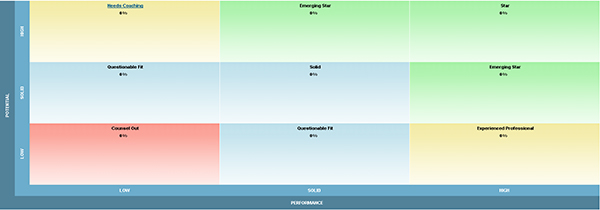

Figure found on Wikimedia Commons courtesy of Jsysel.
By Robin R. Gainey
The growth and continued health of fire service organizations depends on the continuous reevaluation of the needs and potential of the most complicated asset a fire department manages: its human personnel pool. Whether or not a formal portion of the organization is assigned this duty, it is a part of every fire department. Human resources (HR) is the common name for the area of interactions that deals with everything involving personnel, from hiring and dismissals to promotional issues as well as interpersonal conflicts that range from seniority to harassment in the workplace. HR personnel are also tasked with meeting organizational needs by addressing—among other things—workplace ethics as it relates to management and how job analysis and succession planning act in concert for public organizational longevity in relation to standards and accountability expected by the public. These issues are impacted by the additional challenges of constant reductions in budgets and cultural/social changes in the workforce.
No workplace can exist without the ethical actions of its employees, and the fire service has the public’s most vulnerable clients. An organization’s reputation is a reflection of the actions of its employees, and all public organizations are expected to have high ethical standards and the associated accountability. An active ethics program will provide a more consistent positive outcome and, as noted by Weaver and Trevino, “An ethics program is more likely to be perceived as fairly administered when HR clearly is associated with it.”1 These requirements for ethical organizational behavior cover internal and external environments. The external ethic requirements of a public sector employee can be based on the knowledge that, as keepers of public trust, “A dominant ethic of public service must be that careerists keep citizens fully informed about the possibilities for public service.”2 Internal ethics affects all areas of HR, which usually creates and enforces an organization’s work rules with a heavy review. According to Jonathan P. West, “Nearly seven of ten said the HR department is a primary resource for ethics policies in their organizations.” (1) All decisions throughout the employment process must be ethically based, and HR has the best opportunity to oversee that policies are in place and enforced. Educating employees in the expectations of an organization’s ethics also falls on the shoulders of HR through the administration.
Succession planning is critical to the long-term success of the fire service, especially given that the actions of incident commanders have life-and-death consequences. The mere movement of personnel to fill positions is not succession. As defined by Daley, “Succession planning highlights and identifies individuals who may succeed in key leadership positions, while workforce planning is concerned with identifying key competencies that the organization will need and assuring that necessary training and development are provided.”3 One of the most important foundations of succession planning is job analysis. As noted in Brannick, et al., “Job analysis and work analysis are important because they form the basis for the solution of virtually every human resource problem”4 Conduct job analysis carefully, with fairness and ethical rules in place to ensure that no overt emphasis is evaded or inserted into the final job description. Identify all organizational positions by the knowledge, skills, and abilities (KSAs) needed to carry out the function of that position.
An adequate succession plan will entail HR conducting a thorough needs assessment of the organization. To achieve this, as noted by McNabb, et al., “The first thing to be done should be a knowledge audit—an assessment of the current knowledge base and how it will need to change to meet future organizational needs and strategy”5 An organization must have good knowledge of where it must properly plan positive movement into the future. Coupling this assessment to a thorough Strength-Weakness–Opportunity-Challenges (SWOC) analysis is one way HR can propose changes to current resource abilities for future needs.
RELATED: Halton on The Fire Service Code ‖ Kupietz on Ethical Organizations ‖ Antonellis Jr. on Politics and Ethics
Because of the ever-changing world of the fire service, as well as for ethical and legal reasons, good job analysis is in the best interest of the organization. It lays groundwork for compensation as well as avoids discrimination charges in the firing and promotion selection process. This does not bind the organization into hiring or promoting individuals that are unsatisfactory. As noted in Caruth, et al., “The effectiveness of any organization is increased by having thoroughly trained individuals continuously available to perform necessary activities.”6 The selection of personnel that only meet organizational criteria is not only possible but understood under Title VII. McNabb, et al., notes that “The Supreme Court in Griggs v Duke Power ruled that testing had to be job related or indicative of future performance”7 HR can ensure that all steps and procedures fall within the needs of the organization, legally protecting the fire service as well. The proper use of job analysis will also allow compensation packages to be created. As noted in Brannick, et al., “Job evaluation is the process of assigning value to a job for compensation purposes…” (4)
The act of interviewing for positions also falls into the area that requires HR direction. As noted in Caruth, et al., “The interview is perhaps more open to potential charges of discrimination than any other tool used in selection”(4) All of these points emphasize how HR must manage the selection of hiring and promotion, using job analysis as an ethical and a legal basis for succession planning needs.
Employee training and development are also integral to succession planning (again keeping the KSA base in tune with needs). Chiefs know that it is more than paychecks that motivate most fire service personnel. The intrinsic rewards provided by the nature or function of the organization may be more important to public sector employees than—or compensate for the limited availability of—performance-related extrinsic rewards.8 Because training can be tied to compensation or promotion, make sure to act ethically, and afford equitable opportunity to all employees; HR should be able to provide a progressive developmental plan for employees outlining how to achieve career goals, while also reinforcing the achievement of the organization’s succession plan.
The evaluation or performance appraisal of an employee’s progress—task- and career-oriented—is important for the organization. Identifying needed training or shortfalls in development can increase ability to achieve the succession agenda. Take great care with this aspect of HR; evaluations must be ongoing, systematic, and as unbiased as possible because of the considerable ethical and legal concerns. Associate these evaluations with training programs. As noted by Daley, “Performance appraisal process does not occur in isolation; it is an integral part of an organization’s performance management system.” (3) You can associate termination with evaluation, but do not have it be wholly dependent on it; document it carefully to avoid legal challenges and unethical activity.
If a collective bargaining agreement (CBA) exists that covers organizational employees, it will affect most of the aspects of compensation, promotions, evaluations, and terminations of a public sector organization. There will be some mandatory subjects that are items of collective bargaining, considering that the “National Labor Relations Act requires that employers and unions must collectively bargain subjects that are economic and non-economic including wages, hours and working conditions”9 Promotions, evaluations, and methods for due process of grievances are examples of non-economic parts of well-written CBAs. If negotiated correctly, the agreement will parallel the needs of HR to achieve both strong ethical treatment of employees and the ability to have in place a foreseeable system to execute a succession plan.
Chiefs and fire service administrators should use the tools of HR management to achieve the public’s expectations of its fire department: a vibrant, viable, and ethical organization made up of top-shelf employees placed into each position that results in the best outcome for the present and the future. All potential employees are welcome; those hired or promoted can be vetted to the needs of the fire service through legally defendable systems through oversight of a strong administrator’s use of good HR practices.
References
- West, J P. (2003). Ethics and Resource Management. In Hays, Steven W., Kearney, Richard C., Coggburn, Jerrell D. (Eds), Public Human Resource Management (5th ed.) (pp. 275- 287) USA: Pearson.
- Jacobson, W S. (2003). Planning for Today and Tomorrow: Workforce Planning. In Hays, Steven W., Kearney, Richard C., Coggburn, Jerrell D. (Eds), Public Human Resource Management (5th ed.) (pp. 179-201) USA: Pearson.
- Daley, D M. (2003). The Trials and Tribulations of Performance Appraisal: Problems and Prospects in the Twenty-First Century. In Hays, Steven W., Kearney, Richard C., Coggburn, Jerrell D. (Eds), Public Human Resource Management (5th ed.) (pp. 107-121) USA: Pearson.
- Brannick M T, Levine E L, Morgeson F P. (2007). Job and Work Analysis, (2nd ed.) Sage Publication, Los Angeles.
- McNabb, David E., Gibson, Linda K., Finnie, Bruce W. (2006). The Case of the Vanishing Workforce. Public Performance & Management Review, Vol. 29, No. 3 (Mar.), (pp. 358-368).
- Caruth D L, Caruth Gail D., Stephanie S. Pane (2009). Staffing the Contemporary Organization. (3rd ed.) Westport, CT: Praeger.
- Mason, S G and Stein L (2003). Local Government Personnel Administration: Heritage, Contemporary Practice, and Problems. In Hays, Steven W., Kearney, Richard C., Coggburn, Jerrell D. (Eds), Public Human Resource Management (5th ed.) (pp. 64-78) USA: Pearson.
- Perry J L, Hondeghem A, and Wise L R (2010). Revisiting the Motivational Bases of Public Service: Twenty Years of Research and an Agenda for the Future. Public Administration Review, Vol. 70, No. 5, (September | October), (pp. 681-690).
- National Labor College (2006). Open Learning Courses >> Collective Bargaining. http://www.nlc.edu/cait/olc/Collective_Bargaining/html/c-chapter1.html. (Cited 4/10/13)
Robin R. Gainey is a 37-year fire service veteran and a firefighter with Jacksonville (FL) Fire Rescue Department (JFRD), where he has spent 27 of those years. With the JFRD, he has also been the special operations district chief for the ‘A’ shift, a captain for the technical rescue team, and the district chief of suppression. He has a master’s degree in public administration from the University of North Florida.


